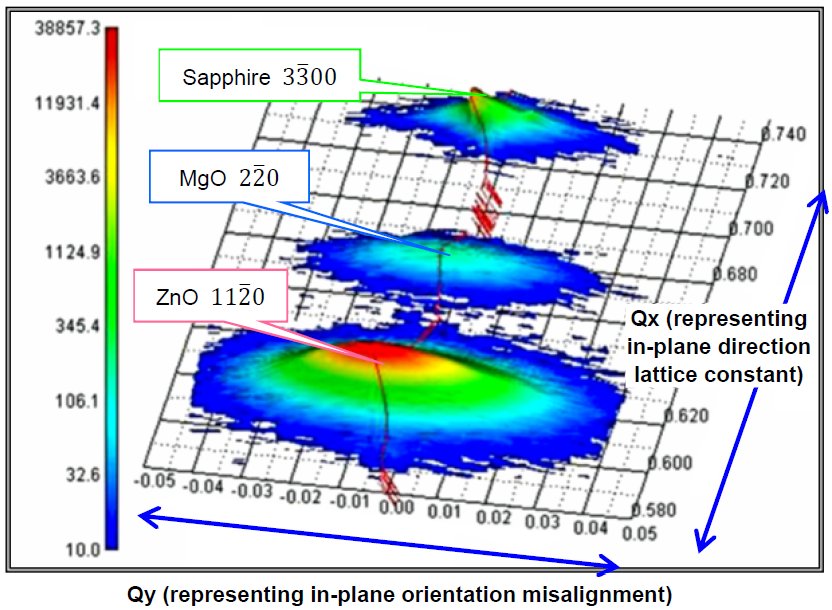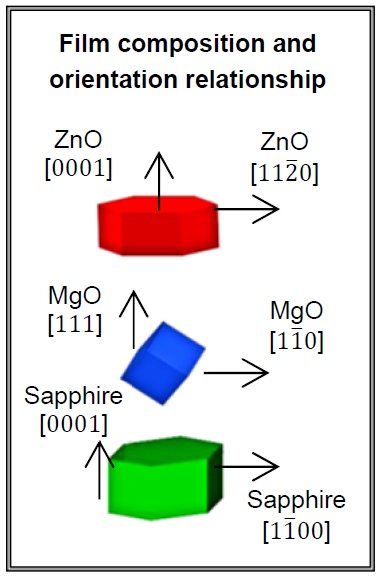Crystal Orientation Evaluation of Epitaxial Film and Ultrathin Buffer Layers by In-plane Reciprocal Space Mapping
Introduction
ZnO is drawing attention as a new material for transparent conductive films and is expected to be used in flat-panel displays and white LEDs. For the evaluation of the epitaxial-film materials, it is important to understand the relationship of the crystal orientation between the substrate and the film. In-plane reciprocal space mapping reveals the crystal orientation in the sample in-plane direction.
Measurements and results
We performed an in-plane reciprocal space mapping measurement on a ZnO epitaxial film grown on a c-plane sapphire substrate. To produce a ZnO epitaxial film with high crystallinity, MgO was introduced as a buffer layer between the substrate and the film. The thicknesses of the ZnO layer and the MgO buffer layer were about 100 nm and 5 nm, respectively.

Figure 1: In-plane reciprocal space map of ZnO film

Figure 2: Film composition and orientation relationship
Figure 1 shows the obtained reciprocal space map. The result indicates that ZnO and MgO were epitaxially grown on the substrate (1). Figure 2 shows the relationship of the crystal orientation between the compositions obtained by the indexing of individual reflections. The in-plane reciprocal space mapping measurement collects diffraction profiles while changing the in-plane direction to be observed, enabling simultaneous evaluation of the dispersion of the lattice constants and the deviation of crystal orientation in the in-plane direction. In this example, the orientation of the MgO buffer layer near the interface was evaluated non-destructively using radiolucency through the 100 nm thick ZnO layer.
Reference
(1) Y.F. Chen, S.K. Hong, H.J. Ko, V. Kirshner, H. Wenish, T. Yao, K. Inaba, and Y. Segawa: Appl. Phys. Lett., 78(2001), 3352-3354.

Contact Us
Whether you're interested in getting a quote, want a demo, need technical support, or simply have a question, we're here to help.
